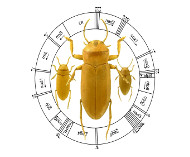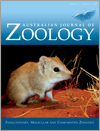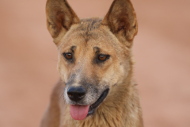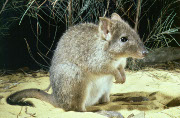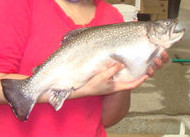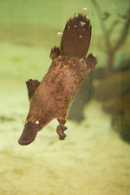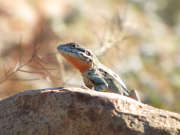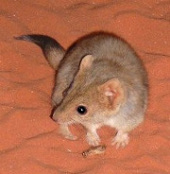Australian Journal of Zoology
Volume 65
Number 5 2017
Central Western Australia contains numerous independently-evolved subterranean diving beetle species in isolated calcrete aquifers, providing an excellent model system for investigating adaptation to life underground. Here, we present the first complete mitochondrial genomes of four subterranean beetle species, allowing future comparative investigations of adaptive metabolic changes in mitochondrial genes.
Photo by Chris Watts and Howard Hamon.
Brain/body weight was measured in a sample of free-ranging dingoes. Dingoes had a larger brain than most domestic dogs of the same body weight, as well as greater values of four indices of encephalisation than dogs. Overall, dingoes were more similar to wolves than dogs are to wolves.
Photo by Bradley Smith.
The diet of the woylie, a critically endangered marsupial, was quantified for the first time. One-half to three-quarters of food intake was fungus, but woylies ate a wide range of foods and showed flexibility in the balance of foods they consumed. This information will help determine whether food shortage was involved in recent dramatic population declines.
Photo by Babs and Bert Wells, courtesy of Department of Biodiversity, Conservation and Attractions, Western Australia.
To control maturation in brook trout males, the present study investigated testicular development and its endocrine control. This study identified that males recruit during December. This time window should be manipulated for any treatment to control maturation in brook trout.
Photo by Ryan Wilkinson.
Captive platypuses showed a preference for the less mobile prey items in a year-round diet. Crayfish formed the largest component, which was also one of the most nutritious items offered. Energy intake varied seasonally. Food preference was likely to be influenced by both nutrition and the behaviour of the prey.
Photo by Amie Hindson.
We investigated the genetic mating system employed by the tawny dragon lizard (Ctenophorus decresii). Four percent of clutches were sired by more than one male and 25% of sires mated with more than one sampled female, revealing a predominantly polygynous genetic mating system and one of the lowest rates of multiple paternity among squamates.
Photo by Jessica Hacking.
Dasycercus blythi are one of the largest marsupial predators in central Australia. By examining movement pathways, we assessed habitat use by individuals in relation to predator exposure and access to resources. D. blythi utilised habitat components that likely increased access to food resources and showed little selection for areas that provided protection from predators.
Photo by J. Molyneux.
